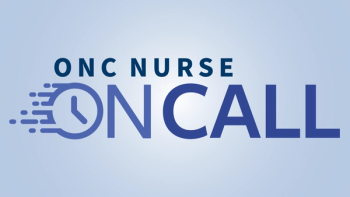
Temferon Shows Early Signs of 3-Year Survival, Disease Control in GBM
Treatment with Temferon led to prolonged survival and possible disease control in 2 patients with newly diagnosed glioblastoma multiforme.
Temferon treatment resulted in 3-year overall survival following initial surgery in 2 patients with newly diagnosed glioblastoma multiforme, according to data from the TEM-LT long-term follow-up of the phase 1/2a TEM-GBM trial (NCT03866109). Both patients showed either sustained disease control or stabilization of progression without additional therapy.1
Of the 38 patients initially enrolled onto the study, 25 received Temferon, and 2 demonstrated long-term responses. These responders were then enrolled onto the TEM-LT long-term follow-up study. One patient remained progression free and did not require second-line therapy following Temferon administration. The other showed initial signs of disease progression that subsequently stabilized without subsequent treatment Collectively, these outcomes suggest potential Temferon-mediated control of disease progression and warrant further investigation in larger studies, the drug’s developer, Genenta, asserted in a news release.
At the April data cutoff, the 2-year OS rate among patients with unmethylated MGMT (uMGMT) who received Temferon was 29%, with a median OS of 17 months. These outcomes represent an improvement over historical data in this population, where the 2-year OS rate is approximately 14% and the median OS ranges from 13 to 15 months.
“We are encouraged by the consistent clinical signals emerging from our glioblastoma trial,” Pierluigi Paracchi, chief executive officer of Genenta Science, stated in the news release. “These findings reinforce our confidence in Temferon’s differentiated mechanism and support our commitment to advancing the platform.”
Temferon is an investigational, cell-based gene therapy composed of autologous CD34-positive, enriched hematopoietic stem and progenitor cells that have been transduced ex vivo with a lentiviral vector encoding myeloid-specific interferon-alpha2 expression.2,3 The therapy is designed to deliver an immunomodulatory payload directly to the tumor microenvironment, with the goal of promoting durable adaptive immune responses. Preclinical data evaluating the agent’s potential to improve CAR T-cell therapy efficacy in patients with solid tumors has been accepted for publication in Science Translational Medicine.1
“For the first time, we show that hematopoietic stem cells can be engineered to durably give rise to myeloid cells that localize to the tumor and reprogram its immune environment,” Luigi Naldini, MD, PhD, co-founder of Genenta Science and a professor of cell and tissue biology and of gene and cell therapy at the San Raffaele University School of Medicine in Milan, Italy, added in the news release. “In glioblastoma, this strategy induced a pro-inflammatory shift in macrophages and the emergence of tumor-reactive T cells, offering a promising new avenue for immune engagement against one of the most resistant cancers.”
Notably,
TEM-GBM Trial Overview
The non-randomized, open-label, phase 1/2a dose-escalation TEM-GBM trial included patients with histologically confirmed, newly diagnosed supratentorial glioblastoma and an unmethylated MGMT gene promoter.4 Eligible patients had undergone complete or partial tumor resection, were candidates for radiotherapy, had a Karnofsky performance score ≥ 70, and a life expectancy ≥ 6 months. Additional eligibility criteria included adequate cardiac, renal, hepatic, and pulmonary function, with a left ventricular ejection fraction ≥ 45% and no evidence of severe pulmonary hypertension, all confirmed within 20 days of Temferon administration.
Patients were assigned to 1 of 8 cohorts (n = 3 per cohort) that evaluated escalating doses of Temferon in combination with 3 different conditioning regimens: thiotepa plus BCNU, thiotepa plus busulfan, or busulfan alone. Dosing levels ranged from 0.5 × 10⁶ to 4 × 10⁶ CD34-positive cells/kg across cohorts 1 through 8, with cohort-specific dosing as follows: cohorts 1 through 4 and 6 received 0.5 to 3 × 10⁶ CD34-positive cells/kg; cohort 5 received 2 × 10⁶; cohort 7 received 3 × 10⁶; and cohort 8 received 4 × 10⁶ CD34-positive cells/kg.
The study’s primary end point was the safety and tolerability of Temferon within the first 90 days. Secondary end points included clinical response, progression-free survival, OS, hematologic recovery within 30 days, and long-term tolerability of the therapy.
Ongoing Evaluation of Temferon in Genitourinary Cancer
In addition to TEM-GBM, the phase 1 portion of the phase 1/2a TEM-GU study (NCT06716853) has now initiated recruitment to evaluate Temferon in patients with genitourinary malignancies. The trial is expected to enroll 12 patients who will receive a fixed dose of 4 x 10⁶ genetically modified CD34-positive cells/kg, consistent with the highest dose shown to be safe and well tolerated in the prior TEM-GBM dose-escalation study. Temferon will be administered in combination with immune checkpoint inhibitors or TKIs to explore potential immunologic synergy.
According to Genenta, additional clinical updates will be provided once sufficient patient experience has been accrued to enable meaningful interpretation. The company hopes to obtain data demonstrating the safety and tolerability of Temferon in patients with metastatic renal cell carcinoma by the end of 2025.
References
- Genenta announces long-term follow-up observations in brain tumor (GBM) study with emerging survival signals. News release. Gentera. July 1, 2025. Accessed July 1, 2025. https://ir.genenta.com/news-releases/news-release-details/genenta-announces-long-term-follow-observations-brain-tumor-gbm
- FDA grants orphan drug designation to Temferon for treatment of glioblastoma multiforme. News release. Genenta Science. March 2, 2023. Accessed July 1, 2025. https://ir.genenta.com/news-releases/news-release-details/fda-grants-orphan-drug-designation-temferon-treatment
- A study evaluating Temferon in patients with glioblastoma & unmethylated MGMT (TEM-GBM). ClinicalTrials.gov. Updated January 6, 2025. Accessed July 1, 2025. https://clinicaltrials.gov/ct2/show/NCT03866109
- The European Commission grants orphan drug designation to Temferon™ for treatment of glioma. News release. Genenta Science. June 29, 2023. Accessed July 1, 2025. https://ir.genenta.com/news-releases/news-release-details/european-commission-grants-orphan-drug-designation-temferontm
Newsletter
Knowledge is power. Don’t miss the most recent breakthroughs in cancer care.

















































































